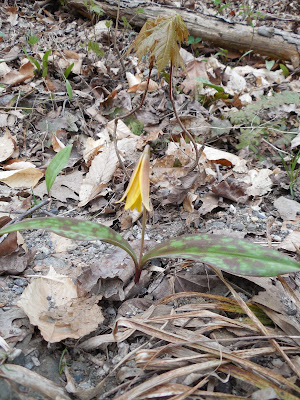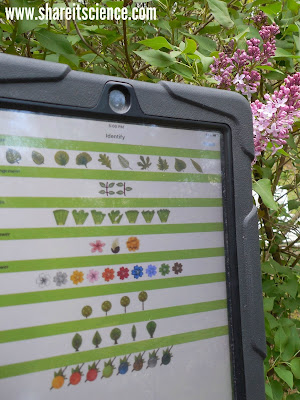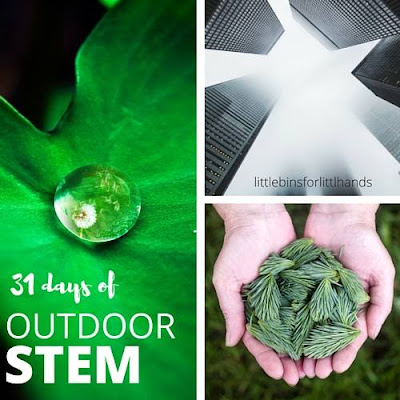Exploring Flowers! Activities From Preschool to High School
I am thrilled to be a guest blogger this week on Only Passionate Curiosity. Check out my post, "Exploring Flowers: Activities From Preschool to High School"!
Get the supplies you need for those flower investigations!
Keep Kids Busy with Science all Summer: Memorial Day Savings!
Calling all young makers, scientists, engineers and innovators!
Who doesn't love a good discount? Take advantage of these deals to be sure your kids stay engaged and excited to learn throughout the summer!
This post contains affiliate links, see disclosures for more information.

Save 30% on award winning Koala crate, Kiwi crate, Doodle crate and Tinker crate subscription boxes. Kids receive a new box in the mail each month!
Use code SUMMERTIME

Koala Crate is designed for ages 3-4 and includes a parent's guide, imagine! magazine, and materials for 2-3 creative projects. Learn more here.
Kiwi Crate is designed for ages 5-8 and includes explore! magazine, and a maker project designed to engage kids in art, science and engineering. Learn more here.
Doodle Crate is for ages 9-16+ and delivers quality creative and DIY projects. Inspiration sheets with bonus online video tutorials introduce new art techniques. Check it out here.
Tinker Crate is also designed for ages 9-16+. Tinker Crate is my personal favorite, a STEM laboratory for young scientists and engineers! Comes with blueprints, Tinker Zine full of DIY articles, and a STEM project. Learn more here.
You'll also want to check out Memorial Day Weekend savings at Marbles the Brain Store! Receive a $10 Marbles Gift Card with your $75 purchase, no code necessary! Runs from 5/27/16-5/30/16
Marbles focuses on games and gadgets that stretch your thinking. Find something new for your summer camping trip, or for some indoor play when the weather doesn't cooperate!

Who doesn't love a good discount? Take advantage of these deals to be sure your kids stay engaged and excited to learn throughout the summer!
This post contains affiliate links, see disclosures for more information.
Save 30% on award winning Koala crate, Kiwi crate, Doodle crate and Tinker crate subscription boxes. Kids receive a new box in the mail each month!
Use code SUMMERTIME
Koala Crate is designed for ages 3-4 and includes a parent's guide, imagine! magazine, and materials for 2-3 creative projects. Learn more here.
Kiwi Crate is designed for ages 5-8 and includes explore! magazine, and a maker project designed to engage kids in art, science and engineering. Learn more here.
Doodle Crate is for ages 9-16+ and delivers quality creative and DIY projects. Inspiration sheets with bonus online video tutorials introduce new art techniques. Check it out here.
Tinker Crate is also designed for ages 9-16+. Tinker Crate is my personal favorite, a STEM laboratory for young scientists and engineers! Comes with blueprints, Tinker Zine full of DIY articles, and a STEM project. Learn more here.
You'll also want to check out Memorial Day Weekend savings at Marbles the Brain Store! Receive a $10 Marbles Gift Card with your $75 purchase, no code necessary! Runs from 5/27/16-5/30/16
Marbles focuses on games and gadgets that stretch your thinking. Find something new for your summer camping trip, or for some indoor play when the weather doesn't cooperate!
Plant Identification Apps: Yard Mapping for Kids
A fun outdoor STEAM (Science, Technology, Engineering, Art, Math) activity for kids is yard mapping. Identifying plants and drawing a map of your yard, the park or a nature trail can be a great way to stimulate that growing brain this summer.
This post contains affiliate links, see disclosures for more information.
When kids need a reference guide, I'm
generally the "let's look it up in a book" old-fashioned
type of person. But, technology is at our fingertips and can be super
useful if used properly. One area where using an actual field guide
can be particularly difficult for kids is plant identification.
Although using a dichotomous key is an excellent
science skill to learn, there are tons of botany terms that are not
kid-friendly to wade through in many field guides. If a task is so
frustrating that they lose interest in even trying, then you've lost
the curiosity that stemmed the activity!
Using an app for plant identification
can be faster and more fun. I'd even argue that in some cases, it can
help with accuracy. Here are some free plant i.d. apps that can help
kids identify plants and create their own yard map.
Identify Your Plants!
I've used these free apps on the iPad,
but please note some of them are also available for iPhone and android.
This app was by far the most useful one I found. It worked well with
all plants I tried, from houseplants, landscaped plants and native
plants. Sometimes trees and shrubs from a nursery can be difficult to
identify with a field guide, so this one is particularly good for
that. Snap a picture, then scroll through the archived images
until you find a match, usually it will be the first or second choice. It's designed to work best with flowers, but
I found it to be fairly accurate with leaf pictures as well. For an
extra, nominal, charge you can ask an expert if you really get
stumped.
This app is set up in a very user
friendly way. You pick the attributes of your tree: leaf shape and
orientation, flower color, shape, etc. Then you can choose from
different options to narrow down your tree. The drawback of the free
version is that it only features a few trees. Currently, you can
upgrade to a wider variety of trees for .99 cents.
This is the closest to a field guide
that you will get in terms of vocabulary. There are some scientific
terms kids might not know, but there are also images to help them move
through the key. The free version features the 100 most common trees
in North America.
I've had mixed results with Leafsnap.
You take a picture of a leaf on a white background and then navigate
through some results to find a match. The design of this app is
really nice, however, having to snap your picture on a white
background either means you need to pick a leaf and lay it down
somewhere flat, or play a balancing act while you snap the picture.
Not the best for small hands!
You might also want to try these apps
available for android phones.
This is another one where you snap a
picture and scroll through some suggestions. It is designed to
recognize plants in Europe, however, if you are living somewhere else
you might still find your plant, or match it to the correct plant family. Then it's
just a matter of pulling out the trusty field guide and checking out
a family group rather than trying to identify from scratch.
Although this app isn't meant
specifically for identifying plants, it works well if you can't find
your plant elsewhere. Snap a picture and then Google searches for
similar images. When you find a similar one, you will most likely
also find the plant's name. You'll definitely want to follow up to be
sure that the name you find on Google is accurate with a field guide
or by visiting a reputable plant website.
There are so many different plants, that it is a must to use multiple sources. You'll also want to double-check with a field guide, or online to be sure you've nailed your identification.
Time to Make Your Map!
Once the tech is loaded up, you can
fill up a backpack with the supplies you need to map the yard and get
to work! Here are some things you might want to take with you:
- Device to run the plant identification apps
- Ruler
- Pencil
- Notebook (If your kiddo gets really serious about keeping a nature notebook, you might want to invest in one from Rite in the Rain- they are sturdy and have waterproof paper!)
- Scotch tape
- Clipboard
- Colored pencils
- Kid-friendly field guide, such as Fandex Field Guide: Trees, Fandex Field Guide: Wildflowers, Peterson First Guide to Trees, Peterson First Guide to Wildflowers
- Adding scale to the map
- Adding color to the map
- Observing, identifying and recording what insects, birds and other animals visit specific plants
- Participate in Cornell's citizen science project YardMap and create a digital yard map online
If you are looking for some other great
outdoor STEM and STEAM activities, check out the rest of the posts in
this series, 31 Days of Outdoor STEM, hosted by Little Bins for Little Hands.
Like what you're reading? Don't miss
another Share it! Science News post! Subscribe by e-mail. Just new
posts- no spam! We pinkie swear!
See it? Share it! American Trout-Lily
I love this time of year, as everything is beginning to leaf and sprout. It's fun to rediscover all of the treasures that lay dormant in the soil during the winter months.
I especially love to see the woodland flowers pop up. There is something a little more magical about these, as they have not been planted by human hands. One that is blossoming now is the American trout-lily, or Erythronium americium. You can find this plant in the forest or on rocky cliffs or ledges throughout most of the United States and parts of Canada. It needs moist, partly shaded locations to grow. It is also called Yellow trout-lily, Eastern trout-lily, Yellow dogtooth violet and Adder's tongue.
 |
| Trout-lily popping up under a log. ©SBF 2015 |
This pretty little yellow blossom resembles a miniature day-lily you might have growing in your flower garden. The mottled leaves of the flower are the giveaway that the plant is present. In fact, most often you'll see more leafy plants than flowering individuals.
The trout-lily is so named because of the white spotted pattern on the leaves that is thought to resemble the pattern of scales on a trout. Native Americans used the leaves in a tincture that was thought to heal wounds.
 |
| The speckled leaves are where the lily gets it's name! ©SBF 2015 |
The trout-lily can live for two years and has roots that are excellent for storage, tubers or bulbs. It blooms throughout the spring, in the months of March, April and May.
What native flowers have you spotted in your area lately? Perhaps the lovely trillium flower, that you can read about in another See it? Share it! post: See it? Share it! Red Trillium or the Jack-in-the-Pulpit, another of my favorites that pops up this time of year.
You can learn more about plants and wildlife through the other posts on the See it? Share it! page. What have you observed recently? Get out there and explore!
Learning Science Through Music!
It has been well documented that songs help us memorize things. We all know this first hand-how did you learn the alphabet? Music is even being used in some medical programs to help students memorize the myriad of facts they'll need to remember to become a physician.
Learning through song is not only a
good memorization tactic, but it's also fun! Here are some of my
favorite music picks for learning science concepts.
This post contains affiliate links, please see disclosures for more information.
They Might Be Giants
I've used "Here Comes Science" by They Might Be Giants (TMBG) with kids in preschool through sixth grade and it is always a hit. I also, admittedly, had their song, "Why Does the Sun Shine?" stuck in my head back in the day throughout my undergrad Astronomy final...
You might know TMBG for the alternative
rock albums they have been putting out since 1982, but more recently
they've done a lot of fun music for kids. Here Comes Science is an
entire album of science songs, but any of their children's albums are
pretty catchy and you probably won't mind listening to them on repeat. Check out some of the other music videos for this album:
Learn more about the album Here Comes Science, or the DVD edition
which also includes videos for the songs. I'd also recommend their latest kid's
album, Why?
Music With Nancy
Nancy Kopman, aka "Music With Nancy" performs all sorts of different children's learning music. You'll find science themes sprinkled in with other educational songs with lovely harmonies that are sure to get the kiddos up and on their feet. Here are some of my favorite songs with science themes:
Check
out Nancy's YouTube Channel for recent uploads. Learn more about her
albums, The Seasons, I Know I'll Grow, Wonderful You, and Shadow by
clicking these links.
Jeff and Paige
You might remember Jeff and Paige from our review of their latest album, "Mighty Wolf". This duo performs engaging songs for young children that do not compromise the learning of actual science and nature concepts. Here they are in action:
You'll definitely want to subscribe to
their YouTube Channel as they load new content frequently. Learn more
about their albums and how to purchase them by clicking these links:
21st Century Energy Superheroes, Get Outdoors! and Mighty Wolf.
Banana Slug String Band
The Banana Slug String Band has been performing children's music about the environment and natural science for 30 years. If you've ever spent time in any environmental education program, there is a good chance you've heard one of their songs. Here's one of my favorites for teaching the water cycle and its vocabulary:
Be sure to check out some of their albums,
Singing In Our Garden, Dirt Made My Lunch, Penguin Parade, and Only One Ocean.
The Board of Education
The Board of Education performs fun kid's rock music with educational themes. Their songs appeal to young kids and even those who might think they are "too cool" for children's music. Here is a sampling of a few of their science themed songs, "Binary", about binary star systems, and "Ice Ages are Fun", about what it would be like to have an Ice Age in modern times:
Check out their catchy and engaging albums, The First Album and Binary by clicking these links.
What are some of your favorite science
children's songs or musicians? We'd love to hear about them. Comment
below!
Like what you're reading? Be sure to
follow us on Facebook, Twitter, Google+ and Pinterest. Don't miss
another post! Sign up for e-mail below. No spam...we pinkie swear!
Subscribe to:
Posts (Atom)















